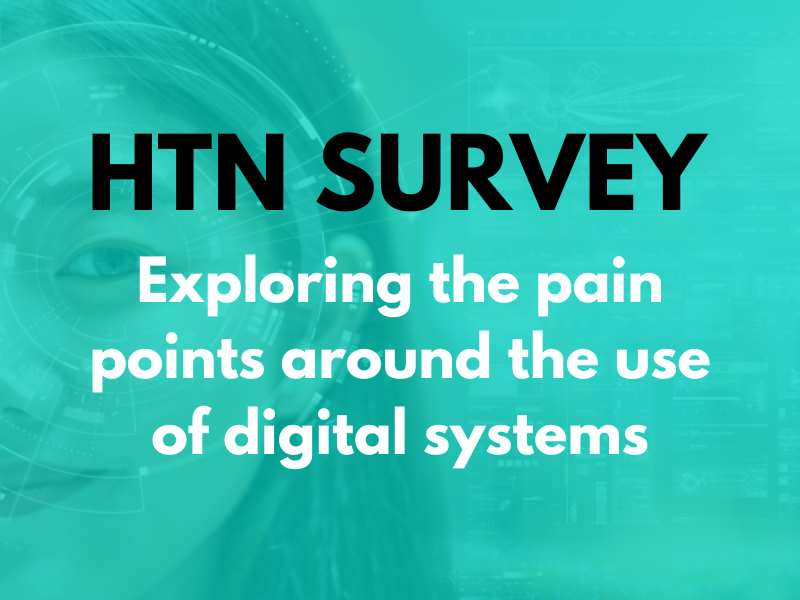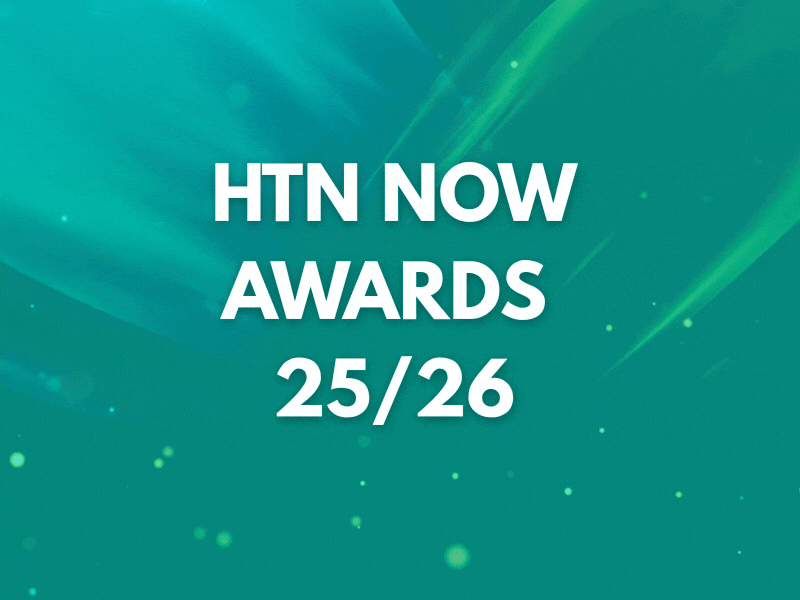The Royal College of General Practitioners recently published the Fit for the Future Report, a vision for general practice. It highlighted an end to the standard 10-minute GP consultation and to allow family doctors to spend more time with patients with complex needs..
It states that by 2030 face-to-face GP consultations will be at least 15 minutes, with longer for those patients who need it.
Recent research showed that the UK offers some of the shortest GP consultations amongst economically-advanced nations at 9.2 minutes – with another study finding that the average GP consultation involved discussion of two and a half health problems.
We asked industry leaders for their views on the report and the vision for general practice. Contributors include: TPP, Difrent, iPlato, Tunstall and Arden & Gem CSU on their views:
Matthew Stickland from TPP
The RCGP report is an important reminder of how technology needs to keep developing. With increasing stresses on clinicians across the NHS estate, good technology will help ease this burden. Data needs to be available in clinical systems, for patients and be used intelligently to create tools that empower care givers across the estate.
NHS-mandated interoperability standards are essential for new ways of working within the NHS, especially across primary care networks. TPP is leading the way in the GP national interoperability programme and is committed to implementing structured data interoperability. Using open standards – to bring the benefits of connected care to everyone – is the most effective way to achieve this.
Equally, we need to make use of the extraordinary data created by over 30 years of digital health in General Practice. TPP has invested heavily in developing machine learning algorithms to support smart appointment scheduling, advanced cancer diagnostic decision support, personalised care pathways, and risk stratification. These tools are already in trial and will shortly be made available free of charge across the NHS.
The report acknowledges that GPs have always been a step ahead of the wider NHS in embracing digital technology and that many emerging technologies have already been adopted by digitally-savvy practices.
Daniel Leakey, Delivery Lead, Difrent
The move to 15-minute appointments is simply essential for the type of quality service that the public needs from GP’s. Technology such as AI are at a stage where they can begin to have a real tangible impact on triaging patients that don’t need a physical examination into diagnosis and treatment recommendations. Combine that with other examinations such as video consultations – technology that exists today and could be put in play via the NHS app – for less serious conditions will reduce the footfall in surgeries.
All of these approaches mentioned in the report such as connected technologies and genomics being put into play will mean the impact on GP resources should be manageable. Legislation in this area will need to be brought in to enable the data to be managed correctly and securely, there are tools and technology in use around the world today that could improve the GP – Patient experience that are not currently permitted in Europe or the UK. We would like to see this change, I personally am one of the increasing numbers of people who wear a connected device that monitors my activity and heart rate, that this is not able to contribute to my doctor’s knowledge of my overall health doesn’t make any sense to me at all.
Wendy Lane, Director of Consultancy Services from Arden & GEM CSU
The launch of the RCGP vision for general practice comes at an important time for GP practices and community services as they work on developing area-based Primary Care Networks. The principle behind PCNs is to extend the range of services available at neighbourhood level, working in partnership with a range of community, voluntary and secondary care services to support populations of approximately 30,000-50,000. As well as enhancing the range of services available locally, PCNs should also increase resilience in this crucial part of the NHS that currently faces significant workforce challenges.
Practices are grappling with complex issues around organisational structure, contracts and funding, culture and leadership as well as resources. From our experience, many are already thinking ahead about how to construct their PCN to enable meaningful contributions to emerging Integrated Care Systems, ensuring that primary care has a strong voice in how these systems develop. Fit for the Future provides additional direction – and purpose – for these changes.
Alongside the structural challenges, PCNs need to consider how data is or could be used to inform decisions now and in the future; how digital technology can enable them to transform service provision when working at scale; and how to move towards a population health approach. Using our established primary care development framework, we have been supporting networks to develop a vision, agree organisational form and become operational.
The expectation that multidisciplinary teams will result in a wider range of services being available in the community will require effective workforce planning and recruitment. There is real potential here to improve patient care and make the best use of clinical time, but practices and networks need to be clear how to effectively use different professionals to achieve the right outcomes. Improving medicines optimisation through use of pharmacists, for example, can improve patient safety, reduce costs and reduce polypharmacy. In Norfolk and Waveney, our pharmacists have successfully achieved this through bringing together GPs and care homes as part of patient medication reviews for care home residents. While in South Warwickshire, our medicines optimisation team has seen the same positive impact from running practice prescribing reviews. With their broad experiences across different care sectors and current knowledge of medicines and NICE guidance, it is encouraging to see the growing recognition of the impact that pharmacists can make within general practice.
As with the NHS Long Term Plan, Fit for the Future sees population health and data analytics as essential to anticipating care needs, reducing health inequalities and reducing unscheduled hospital admissions. Arden & GEM is already working with care providers to use system and econometric modelling to predict the need for and potential impact of new services. Building on the availability of real time data analytics, such as those provided in our business intelligence system GEMIMA, the same techniques can help primary care better understand the needs of the local population and allow practices and PCNs to make a stronger and more confident case for investment in new services. The report picks up on the need to continue to make better use of risk stratification tools to equip clinicians with the insight to understand, predict and monitor risks and make proactive decisions that improve patient care and reduce pressure on hospitals. This needs to be combined with other types of population segmentation approaches so that we can personalise care for individuals and look at how best to deliver proactive and anticipatory care for groups of patients.
Gavin Bashar, UK Managing Director, Tunstall Healthcare
Strategic, innovation-led digital health solutions are not only critical for patient-care now, but in the future to support the RCGP 2030 vision.
Technology has a key role to play in increasing capacity and enabling flexibility in the way healthcare is delivered, making care more proactive and predictive and addressing future health and care challenges. There are several ways technology can enable new models of care, which can deliver more care in people’s own homes, and empower them to self-manage.
Connected Health is a model for the delivery of healthcare that harnesses the power of technology to enable care to be delivered where and when it is needed most, making more efficient use of resources. It connects patients and clinicians, providing insight which enables more proactive, preventative and person-centred care, reducing cost, improving outcomes and enhancing the patient experience.
As an example of this in practice, Tunstall’s Connected Health solutions combine, software, hardware and pathway redesign to support individuals in the community, and help clinicians to manage caseloads more effectively.
How remote health monitoring works:
- Patient uses medical-grade peripherals to take vital signs, and complete their individualised health questionnaire using the myMobile app on their mobile phone.
- Data is securely transferred to the triagemanager software for processing. Results outside of the parameters set for that patient will raise an alert on the system. Alerts are colour coded on the triage screen according to the level of risk.
- Clinicians can then be contacted according to local protocol. Clinicians can also access data remotely at any time to gain valuable insight into trends. Symptoms can be identified at an early stage, enabling early intervention and avoiding the need for more complex care.
Louise Kitchingham, Communications and PR Manager, iPLATO Healthcare
Recently the Royal College of General Practitioners announced its vision for the future, aiming to end the standard 10-minute GP consultation, improve access to appointments for those that need them and expanding multidisciplinary teams to better manage patients in primary care. The RCGP anticipates that its future vision will be met by 2030, which will see GPs delivering round the clock care and working at scale in collaboration with neighbouring practices to proactively improve the health outcomes of their patients.
myGP, an NHS England assured app, is helping to make this future vision a current reality. Through in-app triage and signposting, offering earlier alternative nurse appointments, self-care advice, two-way chat between patients and practices or powering telephone/video consultation the app has helped GP practices reduce the number of people booking a GP appointment by nearly 26%. It also lets patients order their prescriptions online, eradicating the need for an appointment or phone call to their practice.
Data analysed in the RCGP’s ‘Fit for the future – a vision for general practice’ stated that many patients reported frustrations with inadequate practice booking systems as well as concerns over a lack of confidentiality when explaining private medical issues to reception staff in order to get an appointment. Other frustrations included short consultation lengths and long waiting times for appointments.
Using myGP when booking an appointment, patients are asked questions and given relevant information using Artificial Intelligence which allows them to either be signposted to a preferential option of care for their complaint, such as a pharmacy or nurse, or upon booking an appointment allows the practice and the GP to understand why the appointment has been booked, freeing up receptionists’ time and alleviating patient concerns surrounding confidentiality.
It’s estimated that 27% of all GP appointments booked are avoidable or inappropriate, where the patient could have been seen by a member of the multidisciplinary team, visited a pharmacist or ordered repeat prescriptions without seeing their GP.
Mike Lewis, Chairman of iPLATO “figures show that there were 372 million GP appointments that took place last year, we have had huge success working with CCGs and at a local practice level to deliver the online triage service which is yielding fantastic results, by freeing up appointments in patients own GP surgery for people that need them the most. Practice staff tell us that the phone lines go quieter and they have more time to spend with their patients.”
“The RCGPs vision mirrors ours, it allows patients better, faster access to healthcare and to widen access to other members of the primary care team, we wholeheartedly agree that there needs to be a cohesive push towards achieving this vision and we will continue to develop our technology in-line with patient and clinician needs.”






